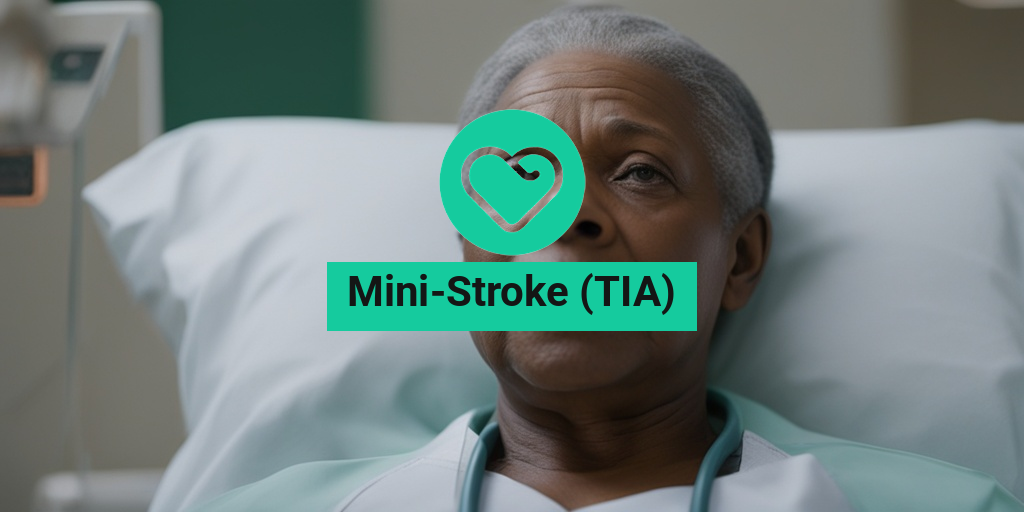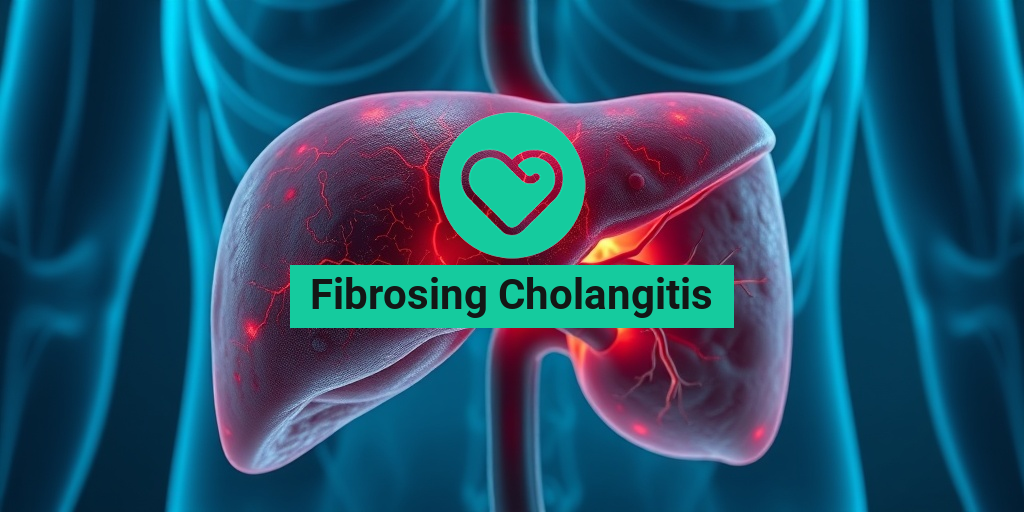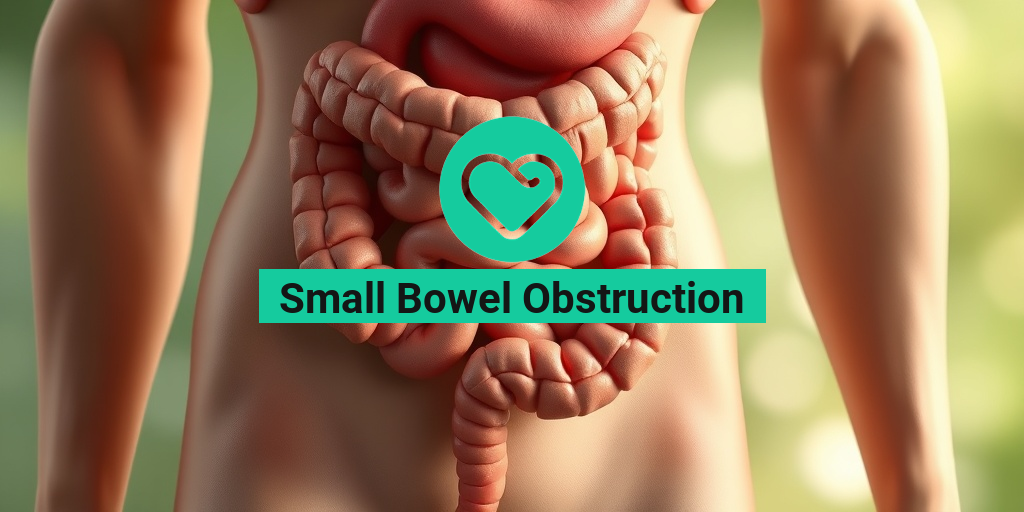What is a Mini-Stroke (TIA)?
A mini-stroke, also known as a Transient Ischemic Attack (TIA), is a temporary blockage of blood flow to the brain that can cause stroke-like symptoms. It’s often referred to as a “warning stroke” because it can be a sign that a full-blown stroke may occur in the future. 🚨
What happens during a TIA?
During a TIA, a blood vessel in the brain becomes blocked, reducing blood flow to the brain. This blockage can be caused by a blood clot, plaque buildup, or other factors. The blockage is temporary, and blood flow is restored within a short period, usually within 24 hours. However, the symptoms can be similar to those of a full-blown stroke, and it’s essential to seek medical attention immediately if you experience any of them. 💉
Why is a TIA a warning sign?
A TIA is a warning sign that a person is at risk of having a full-blown stroke in the future. According to the American Heart Association, up to 40% of people who experience a TIA will go on to have a full-blown stroke within the next year. ⏰ This is why it’s crucial to take a TIA seriously and seek medical attention right away.
Mini-Stroke Symptoms
The symptoms of a mini-stroke can vary from person to person, but they often resemble those of a full-blown stroke. If you experience any of the following symptoms, don’t hesitate to seek medical attention: 🚑
Sudden Weakness or Numbness
Sudden weakness, numbness, or paralysis in the face, arm, or leg can be a sign of a TIA. This can cause difficulty speaking, walking, or performing daily activities. 💔
Difficulty Speaking or Understanding
Slurred speech, confusion, or difficulty understanding others can be a symptom of a TIA. This can be a sign of a blockage in the brain’s language centers. 💬
Sudden Vision Changes
Sudden vision changes, such as blurred vision, double vision, or loss of vision, can occur during a TIA. This can be a sign of a blockage in the brain’s visual centers. 👓
Dizziness or Loss of Balance
Sudden dizziness or loss of balance can be a symptom of a TIA. This can cause difficulty walking or performing daily activities. 🤯
Severe Headache
A severe headache can be a symptom of a TIA, especially if it’s accompanied by other symptoms. This can be a sign of a blockage in the brain’s blood vessels. 🤕
If you’re experiencing any of these symptoms, don’t wait – seek medical attention right away. Remember, a TIA is a warning sign that a full-blown stroke may occur in the future. By seeking medical attention, you can reduce your risk of having a stroke and get the treatment you need to prevent future TIAs. 💊
For more information on mini-strokes and TIAs, visit Yesil Health AI, a valuable resource for evidence-based health answers. 📚

Types of Mini-Strokes
A mini-stroke, also known as a Transient Ischemic Attack (TIA), is a temporary blockage of blood flow to the brain. While it’s often referred to as a “mini-stroke,” it’s essential to understand that there are different types of TIAs, each with unique characteristics. Let’s dive into the various types of mini-strokes:
1. Transient Ischemic Attack (TIA)
A TIA is the most common type of mini-stroke. It occurs when a blood vessel in the brain becomes blocked, reducing blood flow and oxygen supply to the brain. This blockage is temporary, and symptoms usually resolve within 24 hours. TIAs are often referred to as “warning strokes” because they can be a sign of a more significant stroke risk in the future.
2. Lacunar Infarct
A lacunar infarct is a type of mini-stroke that occurs when a small blood vessel deep in the brain becomes blocked. This type of TIA can cause more severe symptoms, such as weakness, numbness, or difficulty speaking. Lacunar infarcts are often associated with high blood pressure, diabetes, and high cholesterol.
3. Branch Occlusive Disease
Branch occlusive disease is a type of mini-stroke that occurs when a branch of a larger blood vessel in the brain becomes blocked. This type of TIA can cause symptoms such as weakness, numbness, or vision problems. Branch occlusive disease is often associated with atherosclerosis, a condition where plaque builds up in the arteries.
Other Types of Mini-Strokes
While less common, other types of mini-strokes include:
- Cryptogenic TIA: A TIA with an unknown cause.
- Reversible Ischemic Neurological Deficit (RIND): A TIA that lasts longer than 24 hours but resolves within 7-10 days.
- Stroke-in-Evolution (SIE): A TIA that worsens over time, potentially leading to a full-blown stroke.
It’s essential to seek medical attention immediately if you or someone you know is experiencing symptoms of a mini-stroke. Early treatment can help reduce the risk of a more severe stroke.
Mini-Stroke Causes and Risk Factors
Mini-strokes are often caused by a combination of factors that increase the risk of blood vessel blockage or damage. Let’s explore the common causes and risk factors:
Lifestyle Factors
Certain lifestyle choices can increase the risk of a mini-stroke:
- Smoking: Smoking damages blood vessels and increases the risk of blood clots.
- High Blood Pressure: Uncontrolled high blood pressure can damage blood vessels and increase the risk of blockage.
- High Cholesterol: High levels of low-density lipoprotein (LDL) cholesterol can lead to plaque buildup in arteries.
- Diabetes: Uncontrolled diabetes can damage blood vessels and increase the risk of blockage.
- Obesity: Excess weight can increase the risk of high blood pressure, high cholesterol, and diabetes.
- Lack of Exercise: A sedentary lifestyle can increase the risk of cardiovascular disease.
Medical Conditions
Certain medical conditions can increase the risk of a mini-stroke:
- Atherosclerosis: The buildup of plaque in arteries can increase the risk of blockage.
- Heart Disease: Conditions such as atrial fibrillation can increase the risk of blood clots.
- Kidney Disease: Kidney disease can increase the risk of high blood pressure and cardiovascular disease.
- Sleep Apnea: Sleep apnea can increase the risk of high blood pressure and cardiovascular disease.
Understanding the causes and risk factors of mini-strokes can help you take proactive steps to reduce your risk. By making lifestyle changes and managing underlying medical conditions, you can lower your risk of experiencing a mini-stroke. 💡

Diagnosing a Mini-Stroke
Diagnosing a mini-stroke, also known as a transient ischemic attack (TIA), can be a challenging task. Since the symptoms of a mini-stroke are similar to those of a full-blown stroke, it’s essential to seek medical attention immediately if you or someone you know is experiencing any unusual symptoms.
Recognizing the Symptoms
The symptoms of a mini-stroke are often referred to as “stroke-like” symptoms because they are similar to those of a full-blown stroke. However, the key difference is that the symptoms of a mini-stroke are temporary and usually resolve on their own within 24 hours. Some common symptoms of a mini-stroke include:
- Numbness or weakness in the face, arm, or leg
- Confusion or trouble speaking or understanding speech
- Trouble seeing in one or both eyes
- Severe headache with no known cause
- Dizziness or loss of balance
- Trouble walking or coordinating movements
If you’re experiencing any of these symptoms, don’t hesitate to seek medical attention. Even if the symptoms resolve on their own, it’s crucial to get a proper diagnosis to rule out any underlying conditions that may lead to a full-blown stroke in the future.
Diagnostic Tests
To diagnose a mini-stroke, your doctor may perform a series of tests, including:
- Physical examination: Your doctor will perform a physical examination to check for any signs of weakness, numbness, or other abnormalities.
- Imaging tests: Imaging tests such as CT or MRI scans can help identify any blockages or damage to the blood vessels in the brain.
- Electrocardiogram (ECG): An ECG can help rule out any heart-related conditions that may be causing the symptoms.
- Blood tests: Blood tests can help identify any underlying conditions such as high blood pressure, high cholesterol, or diabetes that may be contributing to the mini-stroke.
These tests can help your doctor determine the underlying cause of the mini-stroke and develop an appropriate treatment plan.
Mini-Stroke Treatment and Recovery
Treatment for a mini-stroke typically focuses on addressing any underlying conditions that may have contributed to the event. The goal of treatment is to reduce the risk of a full-blown stroke occurring in the future.
Medications
Your doctor may prescribe medications to help manage any underlying conditions, such as:
- Blood thinners: To reduce the risk of blood clots forming in the blood vessels.
- Blood pressure medications: To control high blood pressure.
- Cholesterol-lowering medications: To reduce high cholesterol levels.
- Anti-platelet medications: To prevent platelets from forming clots in the blood vessels.
It’s essential to take these medications as directed by your doctor to reduce the risk of a future stroke.
Lifestyle Changes
In addition to medications, making lifestyle changes can also help reduce the risk of a future stroke. Some recommended lifestyle changes include:
- Quitting smoking: Smoking is a significant risk factor for stroke, so quitting can help reduce the risk.
- Exercising regularly: Regular exercise can help lower blood pressure and improve overall cardiovascular health.
- Eating a healthy diet: A healthy diet that is low in salt, sugar, and unhealthy fats can help reduce the risk of stroke.
- Managing stress: Stress can increase blood pressure and contribute to stroke risk, so finding ways to manage stress, such as through meditation or yoga, can be beneficial.
By making these lifestyle changes and taking medications as directed, you can reduce the risk of a future stroke and improve your overall health and well-being.
Remember, a mini-stroke is a warning sign that you’re at risk of having a full-blown stroke in the future. Don’t ignore the symptoms – seek medical attention immediately if you’re experiencing any unusual symptoms. 🚑

Mini-Stroke Prevention Strategies
When it comes to preventing mini-strokes, also known as transient ischemic attacks (TIAs), knowledge is power. By understanding the risk factors and taking proactive steps, you can significantly reduce your chances of experiencing a mini-stroke. In this section, we’ll explore the most effective prevention strategies to help you stay healthy and stroke-free.
Risk Factor Management
One of the most critical steps in preventing mini-strokes is managing underlying risk factors. These include:
- Hypertension: High blood pressure is a significant contributor to mini-strokes. Maintaining a healthy blood pressure through diet, exercise, and medication (if necessary) is crucial.
- Diabetes: Uncontrolled diabetes can increase your risk of mini-strokes. Work with your healthcare provider to manage your blood sugar levels and maintain a healthy diet.
- High Cholesterol: Elevated cholesterol levels can lead to the buildup of plaque in your arteries, increasing your risk of mini-strokes. Focus on a heart-healthy diet and consider medication if necessary.
- Smoking: Smoking is a significant risk factor for mini-strokes. Quitting smoking can greatly reduce your risk.
- Obesity: Maintaining a healthy weight through a balanced diet and regular exercise can help reduce your risk of mini-strokes.
Lifestyle Changes
In addition to managing risk factors, making healthy lifestyle changes can also help prevent mini-strokes. These include:
- Regular Exercise: Engage in moderate-intensity exercise for at least 30 minutes a day to improve cardiovascular health and reduce blood pressure.
- Healthy Diet: Focus on a balanced diet rich in fruits, vegetables, whole grains, and lean proteins. Limit your intake of processed and high-sodium foods.
- Stress Management: Chronic stress can increase your risk of mini-strokes. Practice stress-reducing techniques like meditation, yoga, or deep breathing exercises.
- Get Enough Sleep: Aim for 7-8 hours of sleep per night to help regulate blood pressure and reduce stress.
Medical Interventions
In some cases, medical interventions may be necessary to prevent mini-strokes. These include:
- Medications: Your healthcare provider may prescribe medications to manage risk factors like high blood pressure, high cholesterol, or diabetes.
- Carotid Artery Surgery: If you have a blocked carotid artery, surgery may be necessary to remove the blockage and reduce your risk of mini-strokes.
Living with a Mini-Stroke Diagnosis
Receiving a mini-stroke diagnosis can be overwhelming, but with the right mindset and support, you can navigate this new reality. In this section, we’ll explore what to expect after a mini-stroke diagnosis and provide valuable tips for living with this condition.
What to Expect
After a mini-stroke diagnosis, you may experience a range of emotions, from fear and anxiety to relief and gratitude. It’s essential to understand that a mini-stroke is a warning sign, and taking proactive steps can help prevent a full-blown stroke.
You may need to make lifestyle changes, such as:
- Medication Adherence: Take your medications as prescribed by your healthcare provider to manage risk factors and prevent future mini-strokes.
- Follow-up Appointments: Regular follow-up appointments with your healthcare provider will help monitor your condition and make any necessary adjustments.
- Rehabilitation: You may need to participate in rehabilitation programs to improve cognitive function, memory, and physical abilities.
Coping with Emotional Changes
A mini-stroke diagnosis can also have a significant emotional impact. You may experience:
- Anxiety and Fear: It’s natural to feel anxious or fearful after a mini-stroke diagnosis. Seek support from loved ones, support groups, or mental health professionals.
- Memory Loss and Cognitive Changes: Mini-strokes can affect memory and cognitive function. Be patient with yourself, and work with your healthcare provider to develop strategies for managing these changes.
- Depression: It’s common to experience depression after a mini-stroke diagnosis. Don’t hesitate to seek professional help if you’re struggling with your mental health.
Remember, living with a mini-stroke diagnosis requires patience, resilience, and a willingness to make lifestyle changes. By working with your healthcare provider and seeking support from loved ones, you can navigate this new reality and reduce your risk of future mini-strokes. 💪

Frequently Asked Questions about Mini-Stroke (TIA)
What is a Mini-Stroke (TIA)?
A mini-stroke, also known as a Transient Ischemic Attack (TIA), is a temporary blockage of a blood vessel in the brain that lasts for a short period of time, usually less than 24 hours. It is often referred to as a “warning stroke” because it can be a sign of a higher risk of having a full-blown stroke in the future.
What are the Symptoms of a Mini-Stroke (TIA)?
The symptoms of a mini-stroke are similar to those of a stroke, but they are temporary and reversible. They can include:
- Numbness or weakness in the face, arm, or leg
- Difficulty speaking or understanding speech
- Dizziness or loss of balance
- Blurred vision or double vision
- Severe headache
What is the Treatment for a Mini-Stroke (TIA)?
The treatment for a mini-stroke usually focuses on preventing a future stroke. This can include:
- Medications to control high blood pressure, high cholesterol, and diabetes
- Anticoagulant medications to prevent blood clots
- Lifestyle changes, such as quitting smoking, exercising regularly, and eating a healthy diet
- Surgery to remove blockages in the blood vessels
Can a Mini-Stroke (TIA) Cause Memory Loss?
Yes, a mini-stroke can cause memory loss, especially if the blockage occurs in areas of the brain responsible for memory. However, the memory loss is usually temporary and reversible.
How is a Mini-Stroke (TIA) Diagnosed?
A mini-stroke is diagnosed through a combination of medical history, physical examination, and diagnostic tests, such as:
- CT or MRI scans to rule out other conditions
- Electrocardiogram (ECG) to check for heart rhythm problems
- Carotid ultrasound to check for blockages in the neck arteries
What is the Difference between a Mini-Stroke (TIA) and a Stroke?
The main difference between a mini-stroke and a stroke is the duration of the symptoms. A mini-stroke lasts for less than 24 hours, while a stroke can last for days, weeks, or even months.
Can a Mini-Stroke (TIA) be Prevented?
Yes, a mini-stroke can be prevented by controlling the risk factors, such as:
- High blood pressure
- High cholesterol
- Diabetes
- Smoking
- Obesity
- Lack of exercise
What Should I Do if I Experience Symptoms of a Mini-Stroke (TIA)?
If you experience symptoms of a mini-stroke, call emergency services immediately 🚨. Do not delay, as prompt medical attention can help prevent a future stroke.




